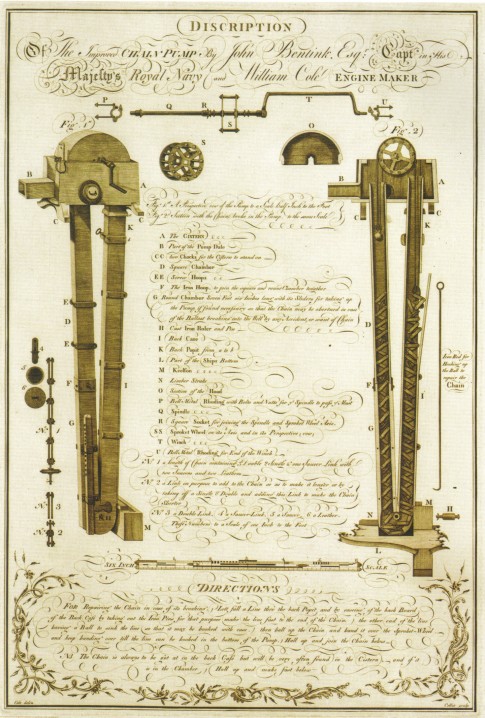THE IMPROVED CHAIN PUMP
By John Bentinck
(Highest resolution available 1824×2700)
The withdrawal of the Cambridge, Marlborough and Dragon from their attack on the Morro Castle in Havana throws into sharp relief the difficulties of waging war far from significant dockyard resources and in the tropics where wood and iron decay quickly. The ships were able to continue their assault but were considered too damaged to be risked further. Much of the damage to the rigging and hull of a warship could be repaired anywhere in the world. Essentially organic, warships in this era were made almost entirely of wood, canvas, iron and hemp, and with plenty of spare material on board, new masts and yards could be fashioned from old’ split lines could be knotted and spliced; and holes in the sails and hull could be patched. But this self sustainability only went so far. Pumps like the one illustrated were extremely effective and could discharge as much as a ton of water per minute, but holes beneath the waterline were hard to find and even harder to mend permanently without access to dockyard or careening facilities. A leaking ship could also have a terrible effect on morale. On numerous occasions officers kept the true state of a sinking ship from their men to prevent panic from taking hold.
The Bentinck chain pump is an excellent example of British technological superiority over her rivals. No other navy had anything comparable.
